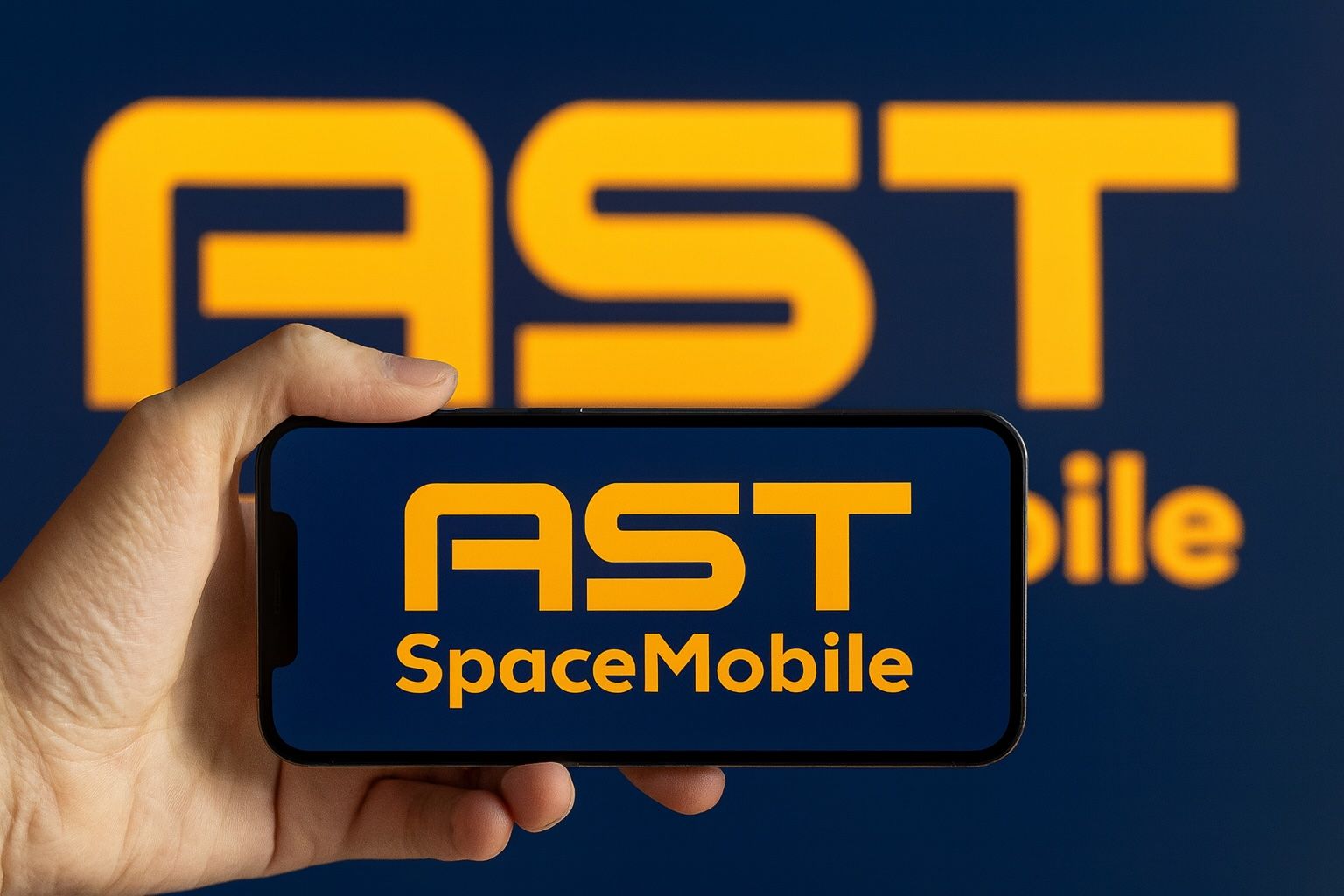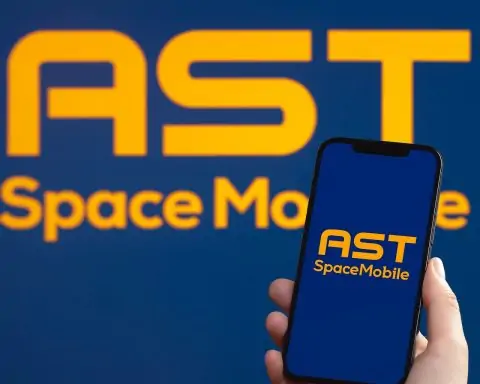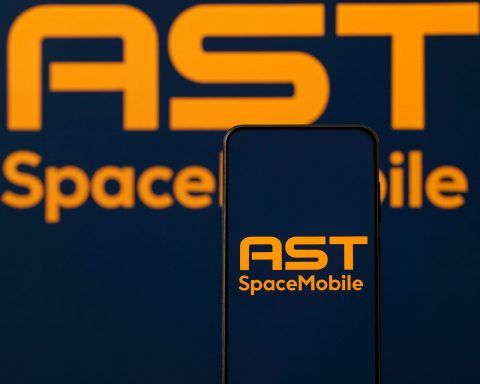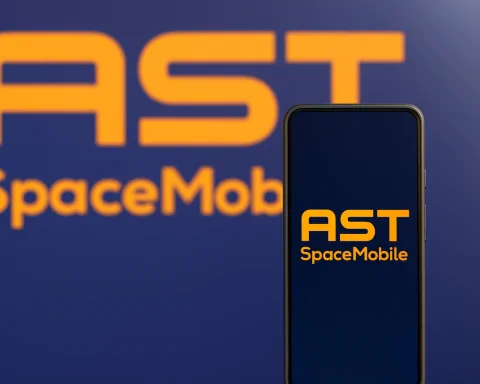- Founded: May 2017 by Abel Avellan (Chairman & CEO) [1]. Avellan (a Venezuelan-American satellite-communications veteran) led AST & Science LLC, which went public via SPAC in 2021 [2].
- Headquarters: Midland, Texas, USA [3].
- Business: Building SpaceMobile, a low-Earth orbit (LEO) satellite constellation for direct-to-cellular broadband. Its BlueBird satellites (each with ~2,400 ft² phased-array antennas) act as “cell towers in space” to connect unmodified 4G/5G phones [4] [5]. A prototype (BlueWalker 3) and five Block-1 BlueBirds were launched by 2024, with next-gen BlueBirds 6–16 under construction. AST plans 45–60 satellites in orbit by end-2026 [6] [7].
- Markets: Wholesale model – sells connectivity to mobile carriers. Signed agreements with 50+ operators worldwide (≈3.0 billion subscribers) [8]. Major partners include AT&T (with Google), Verizon, Vodafone/Telefonica, Rakuten (Japan), Bell Canada, Telefonica, Vodafone-Idea (India), etc. (Also U.S. government defense contracts). For launch, AST has multi-launch deals with SpaceX, Blue Origin (New Glenn) and ISRO [9] [10].
- Technology: BlueBird satellites use ultra-large phased-array panels (each ~220 m²) to deliver voice, SMS and broadband data at speeds up to ~120 Mbps [11] [12]. AST has demonstrated two-way phone voice/video calls via satellite (e.g. BlueWalker 3 in 2023 and BlueBird tests in 2024–25) – a step beyond rivals’ SMS-only links [13] [14].
- Recent Partnerships: In 2024–25 AST announced key deals: a $100 M strategic agreement with Verizon (to extend coverage to remote areas) [15], a Google/AT&T Android development pact [16], and in Oct 2025 a commercial deal to provide Verizon customers with space-based service starting 2026 [17] [18]. Bell Canada will launch AST’s service in 2026 after successful space-cell trials [19]. (Nokia also has a long-term 4G/5G contract with AST.)
- Spectrum/Regulatory: Holds licenses in L‐band and recently acquired global S‑band spectrum (for ~$64.5 M) [20]. In mid-2025 the FCC approved the launch of 20 AST satellites (subject to conditions) [21], an important regulatory milestone. AST has filed for further U.S./Canada L‑band rights (≈45 MHz).
- Funding: Pre-revenue for commercial service (only government contract pilot revenue to date). In July 2025 AST raised $575 M via convertible notes [22], and as of June 30, 2025 held about $940 M cash (≈$1.5 B pro forma after financings) [23]. In Oct 2025 it filed to sell up to $800 M in new shares (ATM offering) [24] [25]. Building the constellation is capital-intensive (expected spend ~$1.5 B through 2026 [26]).
- Financials: Q2’25 EPS –$0.41 on $1.15 M revenue (vs. a –$0.19 estimate on $6.4 M) [27]. Operating costs run ~ $74 M/quarter [28]. Management forecasts ~$50–75 M revenue in H2’25 [29] (mostly from government and carrier pilots). AST remains unprofitable, with negative margins as it scales up satellite deployment.
- Stock (NASDAQ: ASTS): ~361 M shares outstanding [30]. As of Oct 13, 2025 ASTS was trading near $90.50 [31]. It has been one of 2025’s top performers – up roughly 200% year-to-date [32] (from ~$30 in late 2024 to ~$90). Intraday all-time highs reached ~$92.07 [33] (52-week range $17.50–$92.07). Market cap is on the order of $30 B (≈$29.7 B as of 10/13/2025) [34]. Price/sales is extremely high (~6,061× trailing; market pricing in years of growth) [35].
Company Overview
AST SpaceMobile (formerly AST & Science) is an American satellite communications company founded by Abel Avellan, who had previously sold his last venture (Emerging Markets Communications) for $550 M in 2016 [36]. The company’s mission is to eliminate terrestrial coverage gaps by deploying the first space-based cellular broadband network accessible by ordinary smartphones [37]. In practice, AST builds very large low-orbit satellites (BlueBirds) that unfold into massive antenna arrays. These satellites operate on standard cellular bands (850 MHz, L‑band, S‑band, etc.) and connect directly to unmodified 4G/5G phones. In contrast to legacy satellite-to-phone services (e.g. Iridium/Lynk text/SOS), AST aims to offer full voice, messaging and broadband data in real time [38] [39]. This “cell tower in space” approach has attracted major carrier backing (Vodafone, Rakuten, American Tower, Google, Verizon, AT&T, etc. [40]) and thousands of patents on its technology [41].
Satellite Communication Technology
Artist’s impression of AST SpaceMobile’s next-generation “BlueBird” satellites in LEO, beaming connectivity to Earth (Image: Spaceflight Now). AST’s BlueBird satellites each carry gigantic phased-array antenna panels (each roughly 2,400 ft², ~220 m²) to steer thousands of beams simultaneously. These arrays enable high-data-rate links: AST engineers target peak downlink speeds on the order of 120 Mbps per sat [42] [43]. Importantly, no special handset or adapter is required – the signal goes directly to a normal smartphone on familiar cellular frequencies [44].
AST has already demonstrated key milestones: its Block-1 test satellite BlueWalker-3 (launched 2022) proved the concept by connecting a standard phone in orbit. In 2023 AST achieved the first direct-to-phone 4G/5G voice and video calls from space, using BlueWalker-3 [45]. By 2025 the company had repeated this on its commercial BlueBirds – for example, Vodafone (UK) and Rakuten (Japan) conducted live 4G LTE video calls with ordinary smartphones via AST’s sats [46]. Bell Canada similarly tested and completed Canada’s first space-based 4G phone calls, SMS and data on AST’s network. This proved AST’s system can deliver true two-way broadband (not just one-way text) to off-grid phones [47]. In short, AST’s tech transforms huge LEO sats into mobile base stations – a leap beyond narrowband satellite providers.
Business & Partnerships
AST sells satellite connectivity wholesale to established carriers and governments. It has signed agreements with over 50 mobile network operators worldwide [48]. Notable partnerships include AT&T/Google (2024 collaboration for Android phones) [49], and in May 2024 a strategic pact with Verizon (US) to expand coverage to rural areas [50]. In Oct 2025 AST and Verizon announced a definitive commercial agreement: AST will augment Verizon’s network (using its 850 MHz low-band spectrum) to provide blanket coverage in remote U.S. regions starting in 2026 [51] [52]. In Canada, Bell (via Bell Ventures) conducted summer 2025 demonstrations connecting ordinary phones to AST’s BlueBirds. Bell’s CTO Mark McDonald hailed the achievement as offering “significant possibilities… in sectors like natural resources, energy and the environment,” enabling “new efficiencies” in remote areas [53]. Bell now plans to roll out AST’s satellite service nationwide in 2026 [54].
Other global carriers in AST’s alliance include Vodafone/Telefonica (Europe/Africa via a joint venture), Rakuten (Japan), Vodafone-Idea (India), Orange (Europe/West Africa), América Móvil (Latin America) and more [55] [56]. Collectively these partners give AST reach to ~3 billion subscribers. AST also won U.S. government/defense contracts (via agencies like the Defense Innovation Unit) to develop military and disaster-relief broadband services. On the regulatory side, AST recently locked in licensed spectrum: in 2025 it purchased global S‑band rights (complementing planned L‑band access) [57], enabling high-throughput space links. In sum, AST’s business model is capital-efficient: it supplies satellite backhaul to carriers, who then provide service to end users.
Regarding launches and infrastructure, AST has secured a multi-launch program. In late 2024 management announced agreements with SpaceX, Blue Origin and India’s ISRO to loft dozens of satellites through 2026 [58]. (For example, the upcoming BlueBird-6 and -7 are slated for SpaceX and New Glenn rockets [59].) These launch deals give AST the capacity to reach its 45–60 satellite constellation target by 2026. A commercial satellite production facility is also being prepared (announced 2025 in Italy) to build AST’s large phased-array panels.
“The agreement will extend the scope of Verizon’s 850 MHz premium low-band spectrum into areas of the U.S. that would benefit from the ubiquitous reach of space-based broadband technology,” AST CEO Abel Avellan said of the Verizon deal [60]. Verizon’s Srini Kalapala added that by integrating terrestrial and space networks, they are “paving the way for a future where everything and everyone can be connected, regardless of geography” [61].
Recent Developments (Oct 2025)
In late Sep/early Oct 2025 AST announced a string of milestones that drove the rally in its stock. On Oct 1, 2025 AST revealed that its next-generation satellite BlueBird-6 (Block 2) was fully assembled and “ready for flight”; it is scheduled to ship for launch by year-end [62]. On Oct 3 Bell Canada announced an expanded partnership to launch AST’s direct-to-cell service in 2026 (following Bell’s successful space-based 4G call tests) [63]. These updates energized investors: ASTS stock jumped over 16% intraday on Oct 3, hitting a record ~$66.83 before a 16% close at $66.16 [64].
On Oct 7, AST disclosed an SEC filing to raise up to $800 M via an at-the-market stock offering [65]. This caused a brief pullback (~6%) on dilution concerns, even though AST still held >$1.5 B in cash [66]. Then on Oct 8, AST announced a definitive commercial deal with Verizon for space-based cellular service (2026 launch) [67] [68]. This landmark partnership – building on their earlier 2024 strategic alliance – sent the stock sharply higher in after-hours trading. By the close of Oct 13, ASTS was trading near $90.50 (up +10.3% on the day [69] [70]), just below its 52-week peak.
In summary, AST’s October surge was driven by concrete progress: readying new satellites and securing big carrier commitments. Regulators have also been active: besides spectrum deals, the FCC has approved 20 of AST’s satellites for launch (conditioned on certain technical requirements) [71]. These developments position AST as a clear frontrunner in the nascent direct-to-device satellite telecom market.
Financial Summary
AST SpaceMobile remains pre-revenue from commercial subscribers. Its recent income derives mainly from government/test contracts. The Q2 2025 results (released Aug 11, 2025) typify this: revenue was only $1.15 M (vs. consensus ~$6.4 M) and GAAP EPS was –$0.41 (vs. an expected –$0.19) [72]. Operating expenses are very high (~$74 M per quarter [73]) due to R&D and satellite manufacturing. As of 6/30/2025 AST held ~$939 M in cash [74] (about $1.5 B pro forma after the July convertible bond issue [75]). Management forecasts $50–75 M in revenue for H2 2025 [76] (from a mix of defense contracts and early commercial trials), but expects that “substantial revenue” from carriers will only come once more satellites are operational [77]. In short, current finances reflect heavy investment, not profitability – a key risk factor for investors.
Stock Performance
ASTS has exhibited extreme volatility. In 2025 the share price has surged several-fold as excitement grew over AST’s tech and contracts. For example, TS2.tech notes ASTS “more than tripled in value year-to-date” by early Oct 2025 [78]. The rallies have been spurred by specific announcements: on Oct 1 and Oct 2, 2025 the stock jumped roughly +16% each day as news of BlueBird-6 readiness and Bell Canada deal emerged [79]. These back-to-back gains lifted ASTS from the mid-$40s into the mid-$60s within days [80]. By Oct 13 ASTS was trading in the high $80s–$90s [81] [82].
Trading volumes have been unusually high during these moves. On Oct 13, ~13.1 million shares traded (8% above its 3-month average) [83]. Social media sentiment has been “very excited” – ASTS became a trending ticker on Stocktwits during the October rally [84]. However, the stock is now far above its moving averages (50-day ~$50), suggesting the recent surge may have overshot fundamentals [85]. As MarketBeat observed on Oct 13, ASTS closed at $90.50, approaching its 52-week high of $91.41 [86]. In sum, the price action has been fuelled by momentum and news flow, and it will likely remain sensitive to updates on execution and contracts.
Competitive Landscape
AST SpaceMobile competes in a rapidly emerging satellite-to-cell sector. Its chief rival is SpaceX’s Starlink. SpaceX has already launched thousands of LEO satellites (including ~600 optimized for cell service) and in Sept 2025 agreed to pay ~$17 billion for 20 MHz of EchoStar’s spectrum to bolster its direct-to-cell offerings [87]. U.S. carriers are moving fast: for instance, T-Mobile and Starlink are offering limited SMS/voice service via Starlink (expanded Oct 2025), and AT&T has in the past partnered with Starlink as well [88]. Other competitors include Amazon’s Project Kuiper (soon ramping up), Apple’s iPhones (using Globalstar for emergency texting), and startups like Lynk Global (satellite SMS gateways). Traditional satellite operators (Iridium, Inmarsat) have also announced narrowband phone plans via partners.
AST’s edge is its full 4G/5G capability: unlike rivals that offer only text or emergency voice, AST aims to provide true broadband voice/data/video to normal phones [89]. As one industry analyst noted, AST’s “full voice/data service” could command premium pricing versus competitors’ limited links [90]. Nevertheless, experts caution that AST faces “fierce competition” and “no margin for error” [91]. The high-profile progress by Starlink and others means AST must flawlessly execute its launch and business plans to stay ahead. Its unique constellation and >3,700 patents [92] may help, but ultimately winning carriers’ customers will be challenging when multi-billion-dollar competitors are in the game.
Investment Outlook
Wall Street remains divided on ASTS. The consensus rating is Hold with an average 12-month price target around $45 [93] – far below current levels. Analysts’ views are split: Barclays (Oct 1, 2025) reiterated an Overweight (Outperform) rating with a $60 target, highlighting AST’s milestones and its potential to charge premium prices for full mobile broadband [94]. In contrast, UBS recently cut its rating to Neutral (Hold) with a $43 target, pointing to execution uncertainty and Starlink’s lead [95]. William Blair initiated coverage at Market Perform (no target given). MarketBeat reports targets ranging from about $37 to $60 (mean ~$45) [96]. TipRanks shows an average target ~$57 (implying ~30% downside) as of Oct 2025 [97].
Bulls argue AST’s technology is “game-changing” and addresses a huge unmet market [98]. A recent discounted cash flow study even suggested an intrinsic value above $200 per share if all growth assumptions hold [99]. They note that customers (carriers and end-users) will pay for true space-backed coverage beyond terrestrial limits. However, even optimistic analysts stress the risks: the path to revenue is steep, requiring dozens of satellites deployed on schedule, carrier rollout, and user adoption. Key risk factors include further share dilution (from stock issuances), potential launch or technical delays, regulatory or licensing hurdles, and the aggressive push by competitors. As one analyst warned, AST must be flawless: any slip-ups could undermine its lofty valuation [100].
“Wall Street is divided on ASTS,” TS2’s summary notes. “Bulls argue AST’s technology is a ‘game-changer’… but skeptics warn there is ‘no margin for error’ going forward” [101] [102]. In other words, AST SpaceMobile sits at the bleeding edge of innovation – with potentially huge reward if it succeeds, but commensurate execution risk.
Sources: Company filings and press releases [103] [104]; industry news (AP, Reuters, TS2.tech) [105] [106]; financial data from Reuters/MarketBeat [107] [108]; analyst reports [109] [110]; and expert commentary [111] [112]. All stock data as of Oct 13, 2025.
References
1. en.wikipedia.org, 2. en.wikipedia.org, 3. en.wikipedia.org, 4. ts2.tech, 5. ts2.tech, 6. ts2.tech, 7. ts2.tech, 8. ts2.tech, 9. spaceflightnow.com, 10. ts2.tech, 11. ts2.tech, 12. ts2.tech, 13. ts2.tech, 14. ts2.tech, 15. en.wikipedia.org, 16. en.wikipedia.org, 17. apnews.com, 18. ts2.tech, 19. ts2.tech, 20. ts2.tech, 21. ts2.tech, 22. ts2.tech, 23. ts2.tech, 24. ts2.tech, 25. ts2.tech, 26. ts2.tech, 27. www.marketbeat.com, 28. ts2.tech, 29. ts2.tech, 30. www.reuters.com, 31. www.reuters.com, 32. ts2.tech, 33. www.reuters.com, 34. www.reuters.com, 35. www.reuters.com, 36. en.wikipedia.org, 37. en.wikipedia.org, 38. ts2.tech, 39. ts2.tech, 40. ts2.tech, 41. ts2.tech, 42. ts2.tech, 43. ts2.tech, 44. ts2.tech, 45. ts2.tech, 46. ts2.tech, 47. ts2.tech, 48. ts2.tech, 49. en.wikipedia.org, 50. en.wikipedia.org, 51. ts2.tech, 52. apnews.com, 53. ts2.tech, 54. ts2.tech, 55. ts2.tech, 56. ts2.tech, 57. ts2.tech, 58. spaceflightnow.com, 59. ts2.tech, 60. apnews.com, 61. apnews.com, 62. ts2.tech, 63. ts2.tech, 64. ts2.tech, 65. ts2.tech, 66. ts2.tech, 67. ts2.tech, 68. apnews.com, 69. www.reuters.com, 70. www.marketbeat.com, 71. ts2.tech, 72. www.marketbeat.com, 73. ts2.tech, 74. ts2.tech, 75. ts2.tech, 76. ts2.tech, 77. en.wikipedia.org, 78. ts2.tech, 79. ts2.tech, 80. ts2.tech, 81. www.reuters.com, 82. www.marketbeat.com, 83. www.marketbeat.com, 84. ts2.tech, 85. ts2.tech, 86. www.marketbeat.com, 87. ts2.tech, 88. ts2.tech, 89. ts2.tech, 90. ts2.tech, 91. ts2.tech, 92. ts2.tech, 93. ts2.tech, 94. ts2.tech, 95. ts2.tech, 96. www.marketbeat.com, 97. www.tipranks.com, 98. ts2.tech, 99. ts2.tech, 100. ts2.tech, 101. ts2.tech, 102. ts2.tech, 103. ts2.tech, 104. ts2.tech, 105. apnews.com, 106. ts2.tech, 107. www.reuters.com, 108. www.marketbeat.com, 109. ts2.tech, 110. ts2.tech, 111. ts2.tech, 112. ts2.tech










